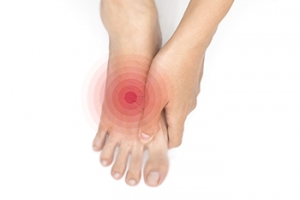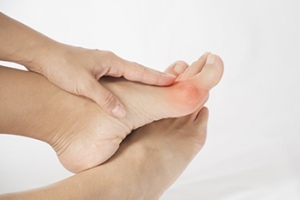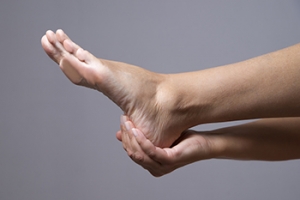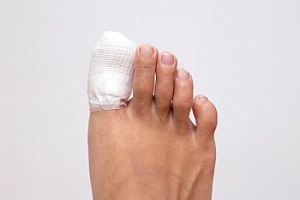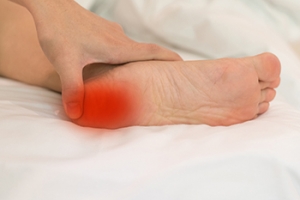Connect With Us
Featured Articles
Super User
What Is Proper Foot Care for Diabetic Patients?
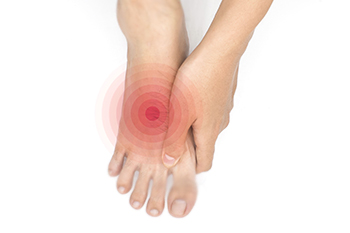
Maintaining proper foot care is important for diabetic patients. Many people who are diabetic have neuropathy, which is the inability to feel existing cuts or scrapes on the feet. This can be caused by elevated blood sugar levels that can happen from the foods that are eaten. An untreated wound on the foot may lead to incurring a foot ulcer, which is an infected wound. Serious consequences may occur if prompt medical attention is not received. It is beneficial to implement a good diabetic foot care routine daily. It can begin with washing and drying the feet thoroughly, especially between the toes. This can be followed by closely inspecting the bottom of the feet for cuts that cannot be felt. Many people use a mirror to accomplish this, or a family member or caregiver may help to do this. Trimming the toenails once per week may help to prevent an ingrown toenail from developing, which can cause severe pain and discomfort. If you have diabetes, it is strongly suggested that you are under the care of a podiatrist who can help you to manage this condition.
Diabetic foot care is important in preventing foot ailments such as ulcers. If you are suffering from diabetes or have any other concerns about your feet, contact one of our podiatrists from New England Foot and Ankle. Our doctors can provide the care you need to keep you pain-free and on your feet.
Diabetic Foot Care
Diabetes affects millions of people every year. The condition can damage blood vessels in many parts of the body, especially the feet. Because of this, taking care of your feet is essential if you have diabetes, and having a podiatrist help monitor your foot health is highly recommended.
The Importance of Caring for Your Feet
- Routinely inspect your feet for bruises or sores.
- Wear socks that fit your feet comfortably.
- Wear comfortable shoes that provide adequate support.
Patients with diabetes should have their doctor monitor their blood levels, as blood sugar levels play such a huge role in diabetic care. Monitoring these levels on a regular basis is highly advised.
It is always best to inform your healthcare professional of any concerns you may have regarding your feet, especially for diabetic patients. Early treatment and routine foot examinations are keys to maintaining proper health, especially because severe complications can arise if proper treatment is not applied.
If you have any questions please feel free to contact one of our offices located in Chelmsford and Newburyport, MA . We offer the newest diagnostic and treatment technologies for all your foot and ankle needs.
Surgery for Bunions
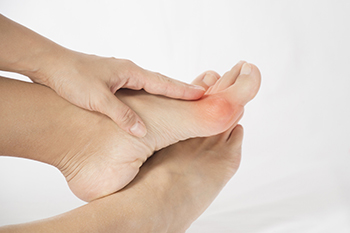
Even if you are unfamiliar with the field of podiatry, you might have already heard about the foot condition known as bunions. Bunions are a kind of bony bump that can form on the outer side of the big toe. There are many ways to treat a bunion and they often depend on the severity of the patient’s case. For example, a podiatrist might recommend a surgical procedure if the bunion is particularly severe. A surgical procedure might be effective in treating bunions because it realigns the joints and removes the bony growth. If you are suffering from significant pain from the bunion or a toe deformity, this might be an indication that surgery be considered. Importantly, there are many types of bunion surgeries, including a bunionectomy and osteotomy. If you are currently living with a bunion, it is suggested that you contact a podiatrist for more information about treatment options.
If you are suffering from bunions, contact one of our podiatrists of New England Foot and Ankle. Our doctors can provide the care you need to keep you pain-free and on your feet.
What Is a Bunion?
A bunion is formed of swollen tissue or an enlargement of boney growth, usually located at the base joint of the toe that connects to the foot. The swelling occurs due to the bones in the big toe shifting inward, which impacts the other toes of the foot. This causes the area around the base of the big toe to become inflamed and painful.
Why Do Bunions Form?
Genetics – Susceptibility to bunions are often hereditary
Stress on the feet – Poorly fitted and uncomfortable footwear that places stress on feet, such as heels, can worsen existing bunions
How Are Bunions Diagnosed?
Doctors often perform two tests – blood tests and x-rays – when trying to diagnose bunions, especially in the early stages of development. Blood tests help determine if the foot pain is being caused by something else, such as arthritis, while x-rays provide a clear picture of your bone structure to your doctor.
How Are Bunions Treated?
- Refrain from wearing heels or similar shoes that cause discomfort
- Select wider shoes that can provide more comfort and reduce pain
- Anti-inflammatory and pain management drugs
- Orthotics or foot inserts
- Surgery
If you have any questions, please feel free to contact one of our offices located in Chelmsford and Newburyport, MA . We offer the newest diagnostic and treatment technologies for all your foot care needs.
Why Is Stretching the Feet Important?
 Research has shown the importance of properly stretching the feet daily, and this is especially true of athletes who participate in running and jumping activities. When the feet are stretched through a proper warm up routine, injuries may be prevented. These injuries may include any tears or sprains that may occur as a result of performing running or jumping activities without initially stretching. Stretching may aid in loosening the Achilles tendon, which may prevent injuries such as Achilles tendinitis. Additionally, blood supply will increase when the muscles are properly stretched, and this may generally aid in the enjoyment of your chosen sport. If you would like additional information about the benefits of stretching the feet, consult with a podiatrist who can teach proper stretching techniques.
Research has shown the importance of properly stretching the feet daily, and this is especially true of athletes who participate in running and jumping activities. When the feet are stretched through a proper warm up routine, injuries may be prevented. These injuries may include any tears or sprains that may occur as a result of performing running or jumping activities without initially stretching. Stretching may aid in loosening the Achilles tendon, which may prevent injuries such as Achilles tendinitis. Additionally, blood supply will increase when the muscles are properly stretched, and this may generally aid in the enjoyment of your chosen sport. If you would like additional information about the benefits of stretching the feet, consult with a podiatrist who can teach proper stretching techniques.
Why Stretching Is Important for Your Feet
Stretching the feet is a great way to prevent injuries. If you have any concerns with your feet consult with one of our podiatrists from New England Foot and Ankle. Our doctors will assess your condition and provide you with quality foot and ankle treatment.
Stretching the Feet
Stretching the muscles in the foot is an important part in any physical activity. Feet that are tight can lead to less flexibility and make you more prone to injury. One of the most common forms of foot pain, plantar fasciitis, can be stretched out to help ease the pain. Stretching can not only ease pain from plantar fasciitis but also prevent it as well. However, it is important to see a podiatrist first to determine if stretching is right for you. Podiatrists can also recommend other ways to stretch your feet. Once you know whether stretching is right for you, here are some excellent stretches you can do.
- Using a foam roller or any cylindrical object (a water bottle or soda can will do), roll the object under your foot back and forth. You should also exert pressure on the object. Be sure to do this to both feet for a minute. Do this exercise three times each.
- Similar to the previous exercise, take a ball, such as a tennis ball, and roll it under your foot while seated and exert pressure on it.
- Grab a resistance band or towel and take a seat. If you are using a towel, fold it length wise. Next put either one between the ball of your foot and heel and pull with both hands on each side towards you. Hold this for 15 seconds and then switch feet. Do this three times for each foot.
- Finally hold your big toe while crossing one leg over the other. Pull the toe towards you and hold for 15 seconds. Once again do this three times per foot.
It is best to go easy when first stretching your foot and work your way up. If your foot starts hurting, stop exercising to ice and rest the foot. It is advised that you then see a podiatrist for help.
If you have any questions, please feel free to contact one of our offices located in Chelmsford and Newburyport, MA . We offer the newest diagnostic and treatment technologies for all your foot care needs.
Benefits of Stretching the Arch of the Foot
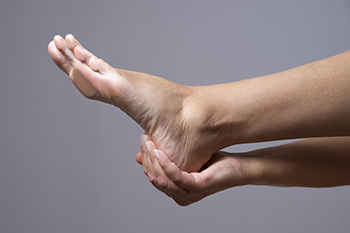
The arches of the feet play an important role in everyone’s daily life, as they help you walk by keeping the foot flexible. The arches of the feet also support your weight when you stand, walk, run, or jump. Stretching exercises specifically targeting the arches can keep them strong and healthy. They can increase blood flow, improve flexibility, relieve pain, improve balance, and reduce the chances of injury. Among the stretches thought to be useful for the arches are the seated foot stretch and the stair stretch. First, sit in a chair with the affected foot crossed over the opposite leg. Pull the toes toward the ankle and hold for 10 seconds. Repeat two or three times and switch legs. Second, stand on a step with the heel hanging over the edge. Be sure to hold onto a rail or banister. Lower the heel gently until you feel a slight stretch in the arch and calf. Hold for 15 seconds and release. Repeat two to four times and switch legs. If you experience arch pain more often and for longer periods, it is suggested that you make an appointment with a podiatrist for an exam and further information on stretches that can help.
Stretching the feet is a great way to prevent injuries. If you have any concerns with your feet consult with one of our podiatrists from New England Foot and Ankle. Our doctors will assess your condition and provide you with quality foot and ankle treatment.
Stretching the Feet
Stretching the muscles in the foot is an important part in any physical activity. Feet that are tight can lead to less flexibility and make you more prone to injury. One of the most common forms of foot pain, plantar fasciitis, can be stretched out to help ease the pain. Stretching can not only ease pain from plantar fasciitis but also prevent it as well. However, it is important to see a podiatrist first if stretching is right for you. Podiatrists can also recommend other ways to stretch your feet. Once you know whether stretching is right for you, here are some excellent stretches you can do.
- Using a foam roller or any cylindrical object (a water bottle or soda can will do), roll the object under your foot back and forth. You should also exert pressure on the object. Be sure to do this to both feet for a minute. Do this exercise three times each.
- Similar to the previous one, take a ball, such as a tennis ball, and roll it under your foot while seated and exert pressure on it.
- Grab a resistance band or towel and take a seat. If you are using a towel, fold it length wise. Next put either one between the ball of your foot and heel and pull with both hands on each side towards you. Hold this for 15 seconds and then switch feet. Do this three times for each foot.
- Finally hold your big toe while crossing one leg over the other. Pull the toe towards you and hold for 15 seconds. Once again do this three times per foot.
It is best to go easy when first stretching your foot and work your way up. If your foot starts hurting, stop exercising and ice and rest the foot. It is advised to then see a podiatrist for help.
If you have any questions, please feel free to contact one of our offices located in Chelmsford and Newburyport, MA . We offer the newest diagnostic and treatment technologies for all your foot care needs.
Broken Toes 101
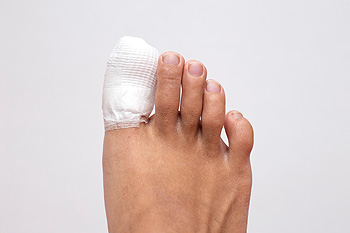
A broken toe is a common foot injury, and can be caused for various reasons. If a heavy object suddenly drops on it, or if it is stubbed into a piece of furniture, it may fracture. Some people gradually develop a broken toe from increasing speed and distance too quickly while running, and this may be considered to be a type of stress fracture. Common symptoms of a broken toe can include immediate bruising, a reduced range of motion, and it can be difficult to walk. If the fracture is severe, there may be a popping sound that is heard when the injury occurs, and the bone may protrude from the skin. Most people who have broken their toe will have a diagnosis performed that can confirm this, which is done by having an X-ray taken. Treatment for mildly broken toes can consist of using the buddy taping method. This is accomplished by taping the affected toe to the toe next to it. This is often successful in providing the necessary stability as the toe heals. If you have broken your toe, it is suggested that you consult with a podiatrist who can properly treat this condition.
A broken toe can be very painful and lead to complications if not properly fixed. If you have any concerns about your feet, contact one of our podiatrists from New England Foot and Ankle. Our doctors will treat your foot and ankle needs.
What to Know About a Broken Toe
Although most people try to avoid foot trauma such as banging, stubbing, or dropping heavy objects on their feet, the unfortunate fact is that it is a common occurrence. Given the fact that toes are positioned in front of the feet, they typically sustain the brunt of such trauma. When trauma occurs to a toe, the result can be a painful break (fracture).
Symptoms of a Broken Toe
- Throbbing pain
- Swelling
- Bruising on the skin and toenail
- The inability to move the toe
- Toe appears crooked or disfigured
- Tingling or numbness in the toe
Generally, it is best to stay off of the injured toe with the affected foot elevated.
Severe toe fractures may be treated with a splint, cast, and in some cases, minor surgery. Due to its position and the pressure it endures with daily activity, future complications can occur if the big toe is not properly treated.
If you have any questions please feel free to contact one of our offices located in Chelmsford and Newburyport, MA . We offer the newest diagnostic and treatment technologies for all your foot and ankle needs.
Several Reasons to Have Foot Pain
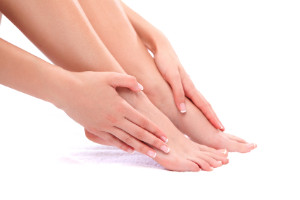
The feet carry the weight of the body and are responsible for walking, running, and jumping. They can become damaged, and various types of foot pain may be experienced. There are several different causes of foot pain and discomfort, and one reason may be from wearing shoes that do not fit correctly. Athlete’s foot is a common condition that many people get. It is defined as a fungal infection of the skin, and the feet may begin to itch, especially between the toes. Bunions are considered to be a deformity and are noticeable by the hard lump that develops on the side of the big toe. It can be caused by wearing shoes that do not have enough room for the toes to move freely in. People who have diabetes may have different levels of foot pain which can be accompanied by a numbing and tingling sensation. If you have foot pain for any reason, it is strongly suggested that you consult with a podiatrist who can determine what the cause is and offer relief and treatment options.
Foot Pain
Foot pain can be extremely painful and debilitating. If you have a foot pain, consult with one of our podiatrists from New England Foot and Ankle. Our doctors will assess your condition and provide you with quality foot and ankle treatment.
Causes
Foot pain is a very broad condition that could be caused by one or more ailments. The most common include:
- Bunions
- Hammertoes
- Plantar Fasciitis
- Bone Spurs
- Corns
- Tarsal Tunnel Syndrome
- Ingrown Toenails
- Arthritis (such as Gout, Rheumatoid, and Osteoarthritis)
- Flat Feet
- Injury (from stress fractures, broken toe, foot, ankle, Achilles tendon ruptures, and sprains)
- And more
Diagnosis
To figure out the cause of foot pain, podiatrists utilize several different methods. This can range from simple visual inspections and sensation tests to X-rays and MRI scans. Prior medical history, family medical history, and any recent physical traumatic events will all be taken into consideration for a proper diagnosis.
Treatment
Treatment depends upon the cause of the foot pain. Whether it is resting, staying off the foot, or having surgery; podiatrists have a number of treatment options available for foot pain.
If you have any questions, please feel free to contact one of our offices located in Chelmsford and Newburyport, MA . We offer the newest diagnostic and treatment technologies for all your foot care needs.
Education Requirements for Foot Doctors

There are many branches of medicine, and podiatry focuses on the conditions of the feet and ankles. These can include deformities, growths, and problems that are associated with diabetes and arthritis. There are various places to practice podiatry, consisting of hospitals, clinics, nursing homes, or owning a practice. The mandatory education requirements include obtaining a bachelor's degree, which is followed by earning a Doctor of Podiatric Medicine (DPM) degree. This is done by attending podiatry school and enrolling in courses such as biology, chemistry, and physics. This program lasts four years, and upon completion, students will attend a residency program for three years. Extensive training may be needed for more specialized fields of podiatry. If you are interested in pursuing a career in podiatry, speaking with this type of doctor may help you in determining if this is the correct choice for you.
If you are experiencing pain in the feet or ankles, don’t join the stubborn majority refusing treatment. Feel free to contact one of our podiatrists from New England Foot and Ankle. Our doctors can provide the care you need to keep you pain-free and on your feet.
What Is a Podiatrist?
Someone would seek the care of a podiatrist if they have suffered a foot injury or have common foot ailments such as heal spurs, bunions, arch problems, deformities, ingrown toenails, corns, foot and ankle problems, etc.
Podiatric Treatment
A podiatrist will treat the problematic areas of the feet, ankle or lower leg by prescribing the following:
- Physical therapy
- Drugs
- Orthotic inserts or soles
- Surgery on lower extremity fractures
A common podiatric procedure a podiatrist will use is a scanner or force plate which will allow the podiatrist to know the designs of orthotics. Patients are then told to follow a series of tasks to complete the treatment. The computer will scan the foot a see which areas show weight distribution and pressure points. The podiatrist will read the analysis and then determine which treatment plans are available.
If you have any questions please feel free to contact one of our offices located in Chelmsford and Newburyport, MA . We offer the newest diagnostic and treatment technologies for all your foot and ankle needs.
Heel Pain Has Many Causes

Heel pain is usually felt on the underside of the heel or behind it. While rarely indicative of anything serious, heel pain can severely impact normal functioning, especially walking and exercise. Heel pain can also become chronic if ignored. One of the most common causes of heel pain is Plantar Fasciitis, a condition caused by overstretching or tearing of the plantar fascia or the band of connective tissue that runs from the heel to the toes. With this affliction, pain, stiffness, and inflammation are typically worse in the morning, upon arising, and activity is resumed. Sometimes using an over-the-counter insole and stretching exercises will be enough to counteract heel pain. However, there are other things that could cause such pain and it is suggested that you see a podiatrist for a proper diagnosis and treatment that is right for you.
Many people suffer from bouts of heel pain. For more information, contact one of our podiatrists of New England Foot and Ankle. Our doctors can provide the care you need to keep you pain-free and on your feet.
Causes of Heel Pain
Heel pain is often associated with plantar fasciitis. The plantar fascia is a band of tissues that extends along the bottom of the foot. A rip or tear in this ligament can cause inflammation of the tissue.
Achilles tendonitis is another cause of heel pain. Inflammation of the Achilles tendon will cause pain from fractures and muscle tearing. Lack of flexibility is also another symptom.
Heel spurs are another cause of pain. When the tissues of the plantar fascia undergo a great deal of stress, it can lead to ligament separation from the heel bone, causing heel spurs.
Why Might Heel Pain Occur?
- Wearing ill-fitting shoes
- Wearing non-supportive shoes
- Weight change
- Excessive running
Treatments
Heel pain should be treated as soon as possible for immediate results. Keeping your feet in a stress-free environment will help. If you suffer from Achilles tendonitis or plantar fasciitis, applying ice will reduce the swelling. Stretching before an exercise like running will help the muscles. Using all these tips will help make heel pain a condition of the past.
If you have any questions please contact one of our offices located in Chelmsford and Newburyport, MA . We offer the newest diagnostic and treatment technologies for all your foot and ankle needs.
Why Your Toes May Hurt

Toes are tiny parts of the body but when there is something wrong, the pain can be substantial. Nerve damage can be the cause of pain in the foot or big toe. Peripheral neuropathy is a condition that results from damage to the peripheral nerves and can cause numbness, pain, and weakness in the feet and toes. While it can be hard to figure out if this is going on, some things to look for include a slow but continual onset of numbness, a pins and needles feeling, or sharp, jabbing, or shooting pains in the feet that can spread to the toes. Additionally, one can suffer from a lack of coordination and falling as peripheral neuropathy can cause muscle weakness and paralysis. There are a host of causes for peripheral neuropathy, including but not limited to diabetes, autoimmune diseases, and infections. If you experience any of the symptoms described, it is important for you to see a podiatrist as soon as possible to get a proper diagnosis and treatment.
Toe pain can disrupt your daily activities. If you have any concerns, contact one of our podiatrists of New England Foot and Ankle. Our doctors can provide the care you need to keep you pain-free and on your feet.
What Causes Toe Pain?
Most severe toe pain is caused due to a sports injury, trauma from dropping something heavy on the toe, or bumping into something rigid. Other problems can develop over time for various reasons.
Toe pain can be caused by one or more ailments. The most common include:
- Trauma
- Sports injury
- Wearing shoes that are too tight
- Arthritis
- Gout
- Corns and calluses
- Hammertoe
- Bunions
- Blisters
- Ingrown toenails
- Sprains
- Fractures (broken bones)
- Dislocations
When to See a Podiatrist
- Severe pain
- Persistent pain that lasts more than a week
- Signs of infection
- Continued swelling
- Pain that prevents walking
Diagnosis
In many cases the cause of toe pain is obvious, but in others, a podiatrist may want to use more advanced methods to determine the problem. These can range from simple visual inspections and sensation tests to X-rays and MRI scans. Prior medical history, family medical history, and any recent physical traumatic events will all be taken into consideration for a proper diagnosis.
Treatment
Treatments for toe pain and injuries vary and may include shoe inserts, padding, taping, medicines, injections, and in some cases, surgery. If you believe that you have broken a toe, please see a podiatrist as soon as possible.
If you have any questions please feel free to contact one of our offices located in Chelmsford and Newburyport, MA . We offer the newest diagnostic tools and technology to treat your foot and ankle needs.
Foot Pain Relief During Pregnancy

Foot pain can be common among pregnant women. This may be a result of the added weight that is gained from the growing fetus, and the feet may become swollen and achy. There are simple methods that can be implemented which can provide moderate relief. Elevating the feet as often as possible and avoiding standing for long periods at a time are generally successful in controlling foot pain from pregnancy. Many women enjoy getting foot massages during their pregnancy, and performing specific stretches can help aching feet. Additionally, it is beneficial to wear shoes that have a lower heel and are comfortable, and wearing cotton socks may help the feet to breathe. Pregnancy can bring joy and happiness, and it is suggested that a podiatrist be consulted who can treat existing foot pain, allowing fuller enjoyment during this time.
Pregnant women with swollen feet can be treated with a variety of different methods that are readily available. For more information about other cures for swollen feet during pregnancy, consult with one of our podiatrists from New England Foot and Ankle. Our doctors will attend to all of your foot and ankle needs.
What Foot Problems Can Arise During Pregnancy?
One problem that can occur is overpronation, which occurs when the arch of the foot flattens and tends to roll inward. This can cause pain and discomfort in your heels while you’re walking or even just standing up, trying to support your baby.
Another problem is edema, or swelling in the extremities. This often affects the feet during pregnancy but tends to occur in the later stages.
How Can I Keep My Feet Healthy During Pregnancy?
- Wearing orthotics can provide extra support for the feet and help distribute weight evenly
- Minimize the amount of time spent walking barefoot
- Wear shoes with good arch support
- Wear shoes that allow for good circulation to the feet
- Elevate feet if you experience swelling
- Massage your feet
- Get regular, light exercise, such as walking, to promote blood circulation to the feet
If you have any questions please feel free to contact one of our offices located in Chelmsford and Newburyport, MA . We offer the newest diagnostic and treatment technologies for all your foot and ankle needs.
Featured Articles
- April 2025
- March 2025
- February 2025
- January 2025
- December 2024
- November 2024
- October 2024
- September 2024
- August 2024
- July 2024
- June 2024
- May 2024
- April 2024
- March 2024
- February 2024
- January 2024
- December 2023
- November 2023
- October 2023
- September 2023
- August 2023
- July 2023
- June 2023
- May 2023
- April 2023
- March 2023
- February 2023
- January 2023
- December 2022
- November 2022
- October 2022
- September 2022
- August 2022
- July 2022
- June 2022
- May 2022
- April 2022
- March 2022
- February 2022
- January 2022
- December 2021
- November 2021
- October 2021
- September 2021
- August 2021
- July 2021
- June 2021
- May 2021
- April 2021
- March 2021
- February 2021
- January 2021
- December 2020
- November 2020
- October 2020
- September 2020
- August 2020
- July 2020
- June 2020
- May 2020
- April 2020
- March 2020
- February 2020
- January 2020
- December 2019
- November 2019
- October 2019
- September 2019
- August 2019
- July 2019
- June 2019
- May 2019
- April 2019
- March 2019
- February 2019
- January 2019
- December 2018
- November 2018
- October 2018
- September 2018
- August 2018
- July 2018
- June 2018
- May 2018
- April 2018
- March 2018
- February 2018
- January 2018
- December 2017
- November 2017
- October 2017
- September 2017
- August 2017
- July 2017
- June 2017
- May 2017
- April 2017
- March 2017
- February 2017
- March 2016
